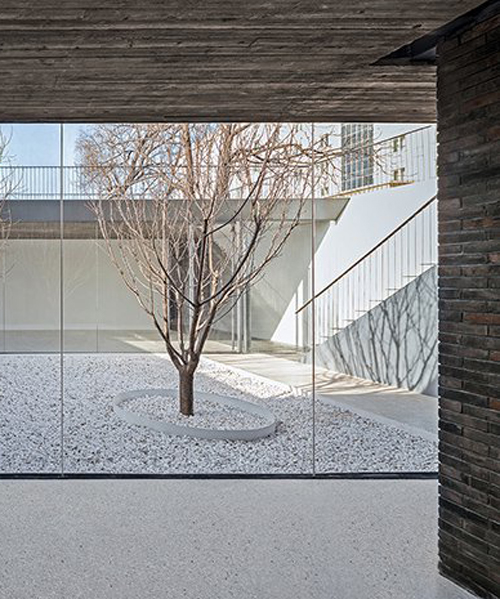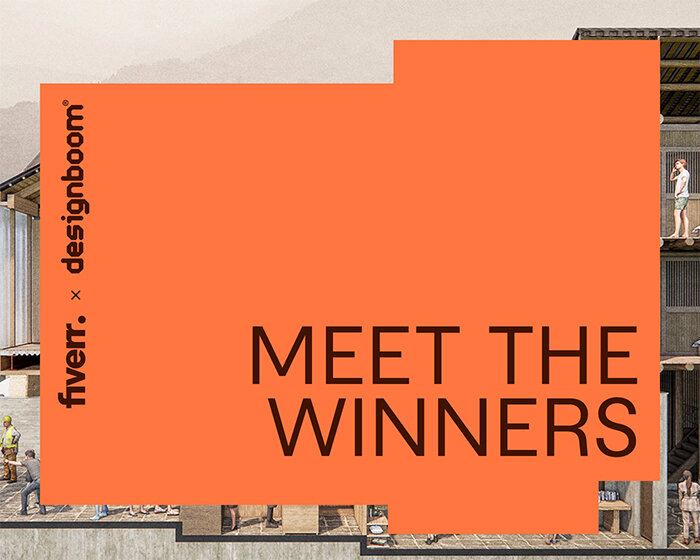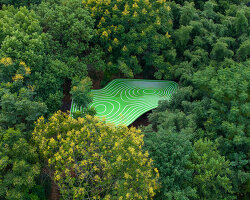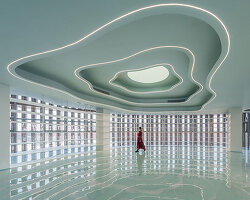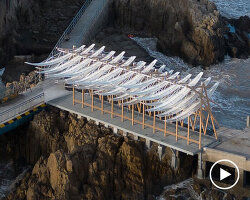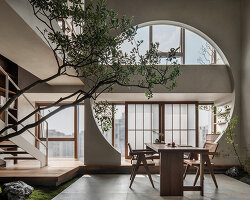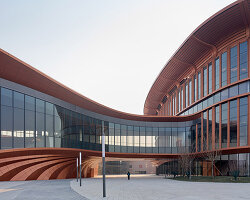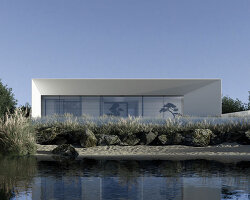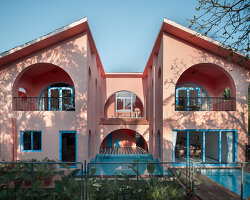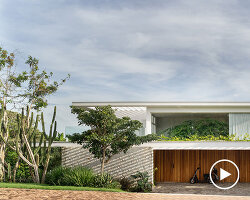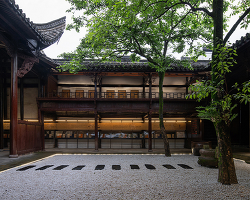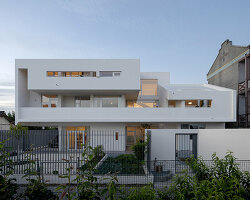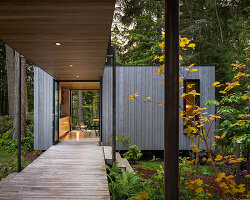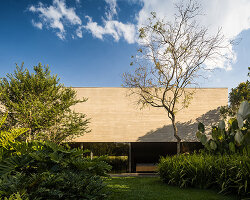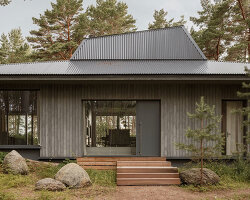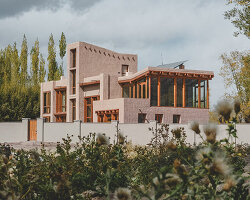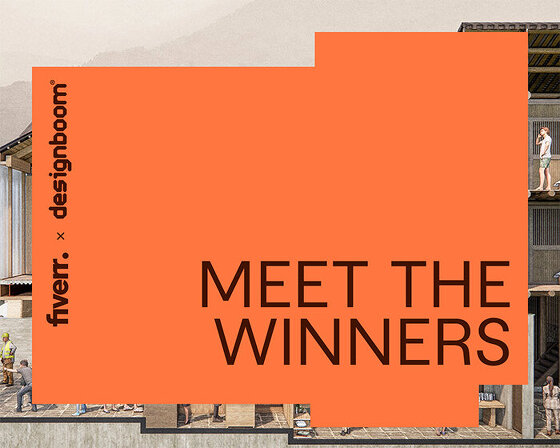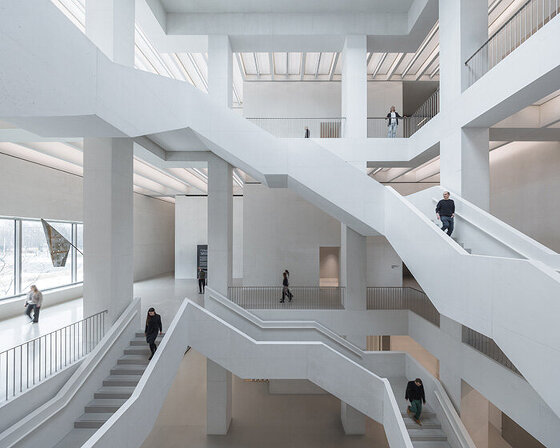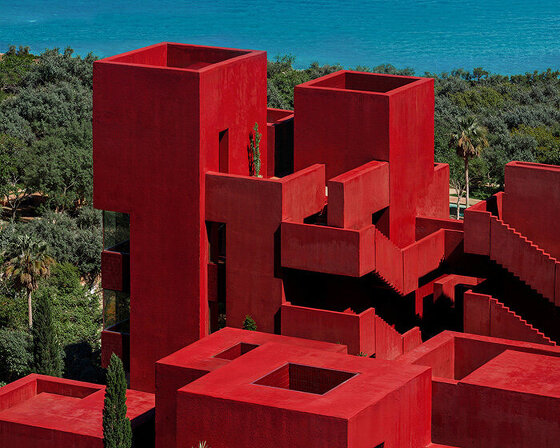chinese-based architecture firm archstudio, folded a courtyard into a small residence located in qianliang hutong, dongcheng district, beijing. with a site of 410 sqm (4413 sqft), the house differs from a typical ‘siheyuan’ sloped roof since the original architecture was made of disconnected flat-topped rooms. the rebuilt building will be rented to house multiple spaces: for working, gathering with friends, and living.
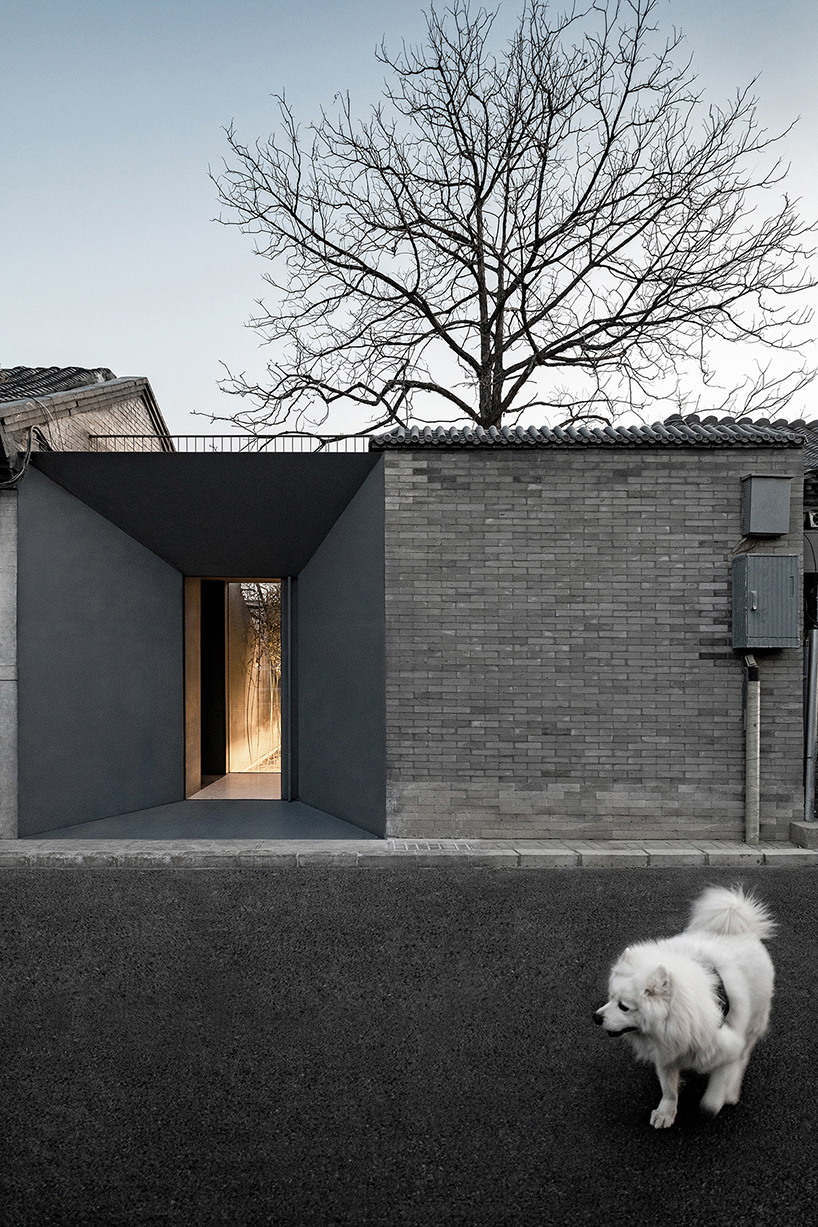
the architects’ greatest challenge for this transformation project was how to present a more dynamic space with a variety of functions based on the constrained site. the site consisted of two parts: the front part was an open ground with two brick rooms and an old tree, while the rear part presented a u-shaped structure and had a courtyard roofed by glass. the original building, with isolated and narrow rooms and a lack of infrastructures, was gradually worn out so that it needed to be completely reconstructed in order to meet the demands of modern life.
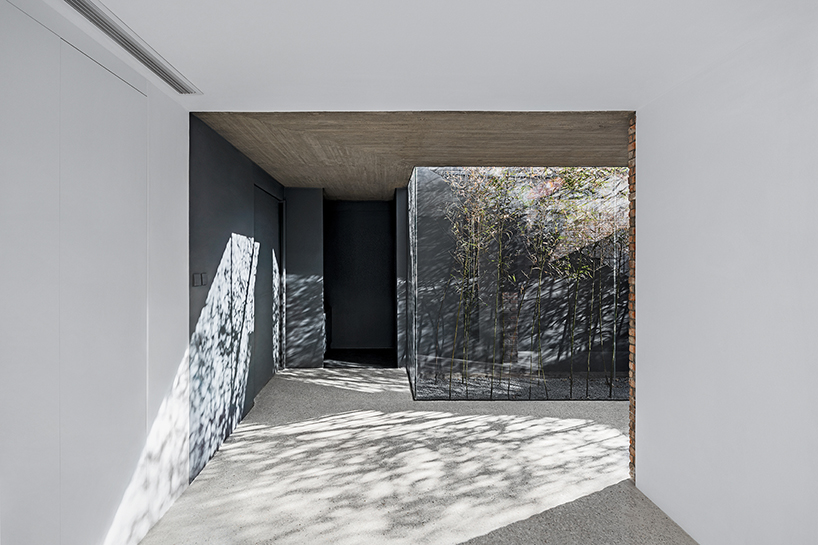
considering the characteristics of flat-roofed buildings, archstudio added corridors and staircases to link rooms and yards, roof and ground respectively. in this way, a ‘folding’ and looping circulation route was formed, allowing interactions between interiors and exteriors, up and down, and new and old.
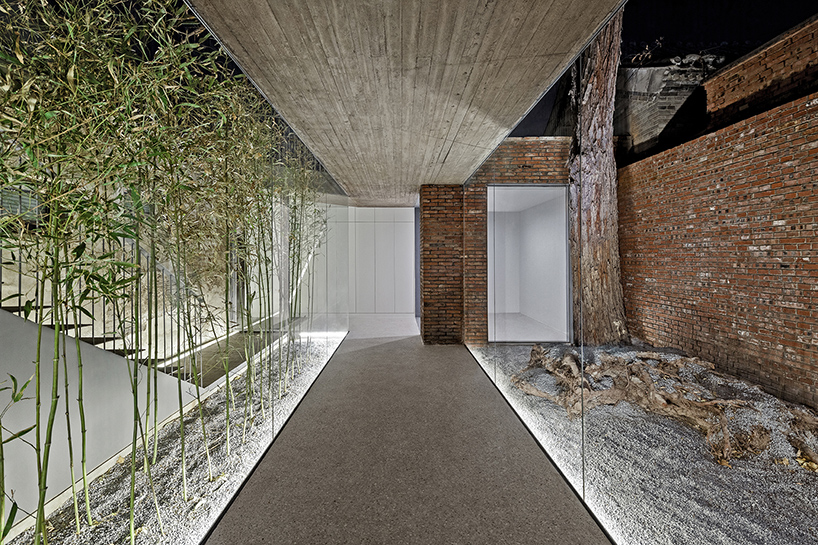
the roof is not only a new public area within the house, but also an extension of internal functions, with its landscape forming an interesting contrast to the surrounding pitched-roof buildings and trees. along the circulation route, four yards of different scales line up, including a long and narrow yard embellished with bamboos at the entrance, a yard with an old locust tree remained in situ, a yard characterized by waterscape and cobbles, with the original glass roof removed, and a south-facing backyard connecting to the neighbor’s house.
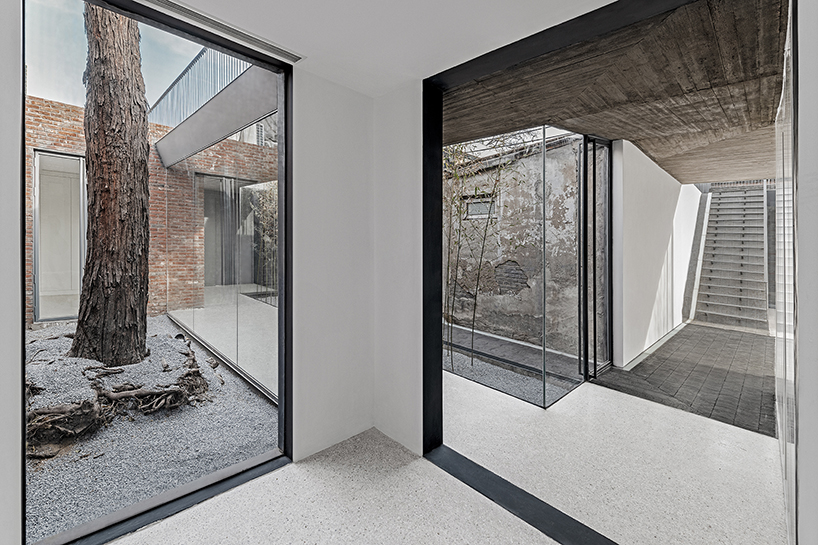
by following the circulation, people can enjoy variable views in the space. archstudio retained the traditional brick and concrete structure, and the two brick rooms that already existed. the designers also inserted three new brick-structured boxes, which were designated private spaces and host more functional areas such as the sitting room, kitchen, and restroom.
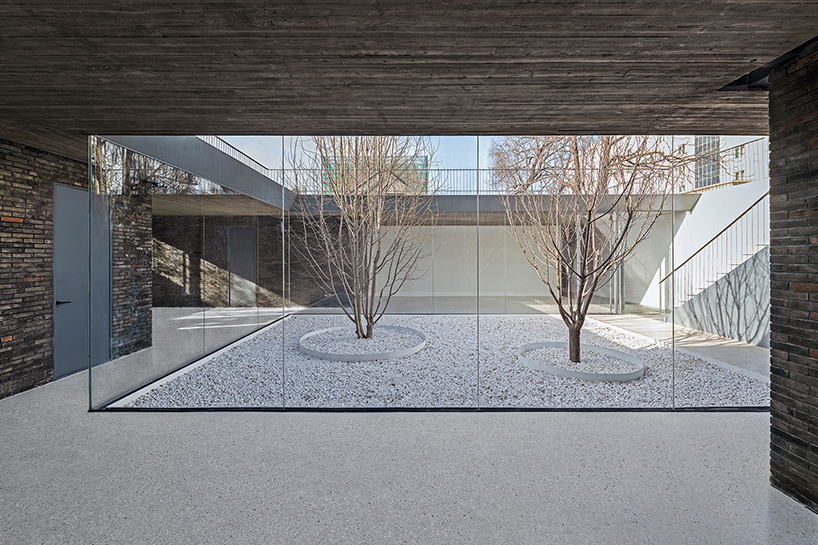
the gaps between the three new boxes form a continuous but detached public space for working, gathering, dining and other activities. the architects hid the structural columns of the roof inside the brick boxes’ walls, and deliberately left gaps between the roof and the boxes, to let daylight filter in.
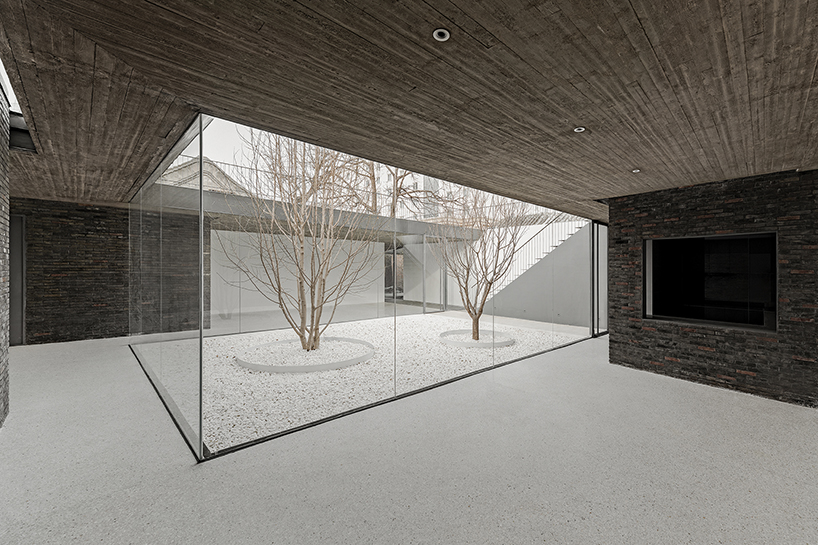
the project used common construction materials used in the traditional siheyuan, such as bricks, grey tiles and cement. the rooftop was paved with grey tiles, which were arranged linearly in different directions. notably, those tiles extend to the indoor area, resulting in an effect imitating flowing water. the roof has a cast in-situ concrete structure, and wood grains on the interior surfaces generated from the formwork. the brick boxes were built with old bricks from demolished houses nearby, with the wall stretching to the rooftop and forming seats for resting.
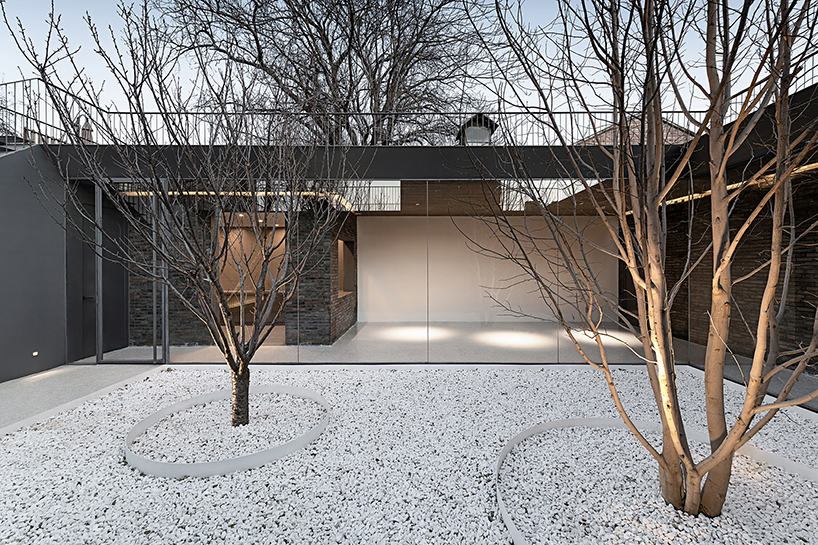
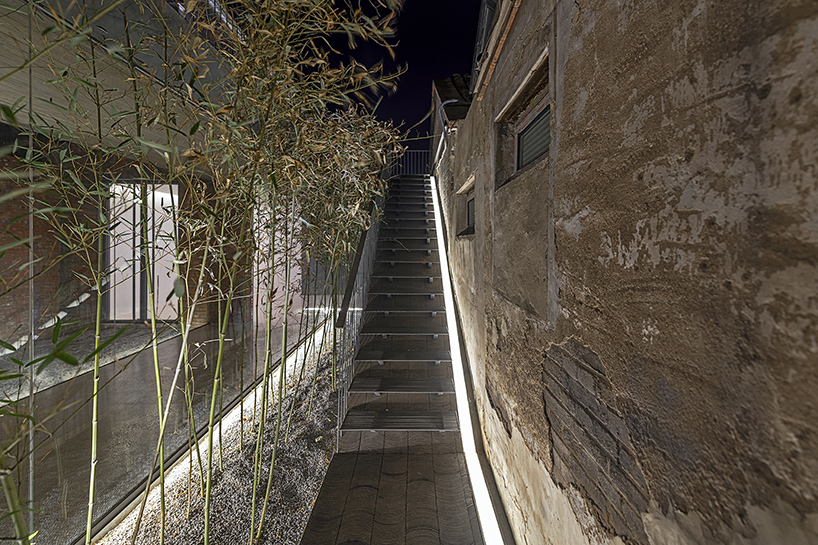
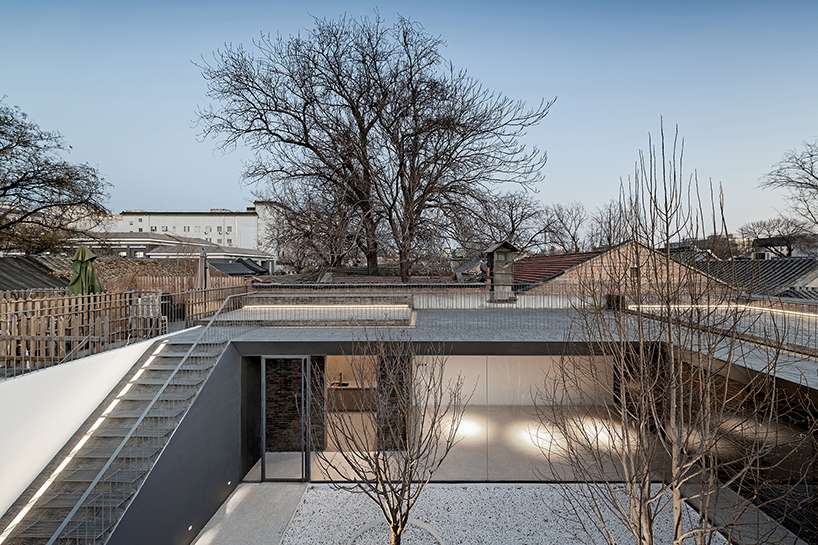
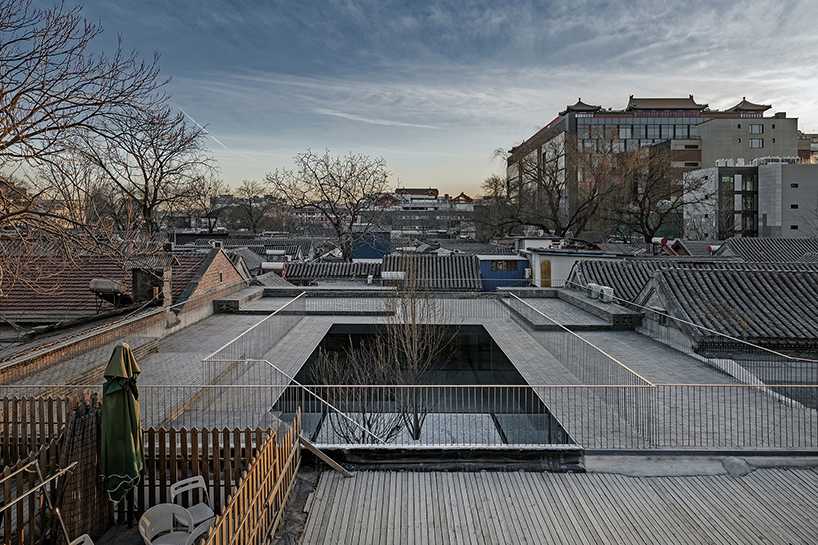
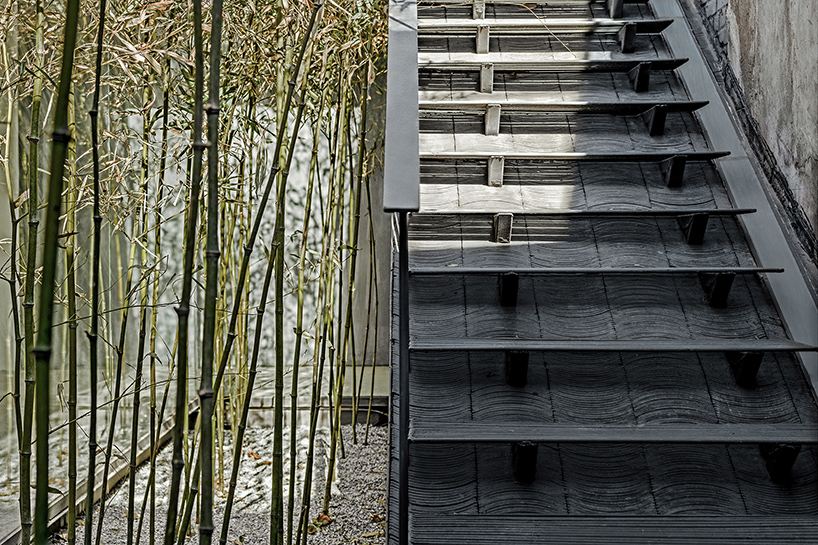
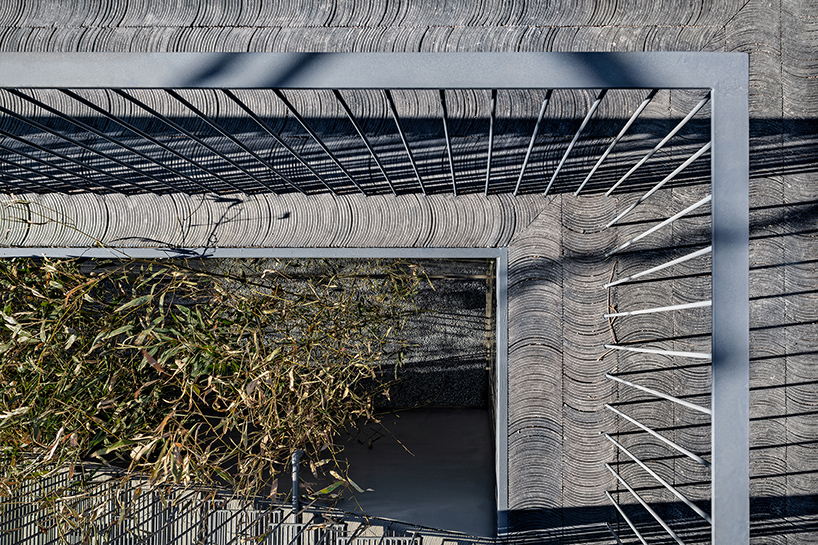
project info:
project name: folding courtyard
project location: qianliang hutong, dongcheng district, beijing
site area: 410 m2
project area: 308 m2
construction phase: april 2018 – april 2019
main materials: brick, grey tile, cement, terrazzo, glass
design firm: archstudio
chief designer: han wenqiang
design team: huang tao, wang tonghui, zhang fuhua, zheng baowei, yu yan
photography: wang ning
designboom has received this project from our ‘DIY submissions‘ feature, where we welcome our readers to submit their own work for publication. see more project submissions from our readers here.
edited by: cristina gomez | designboom
